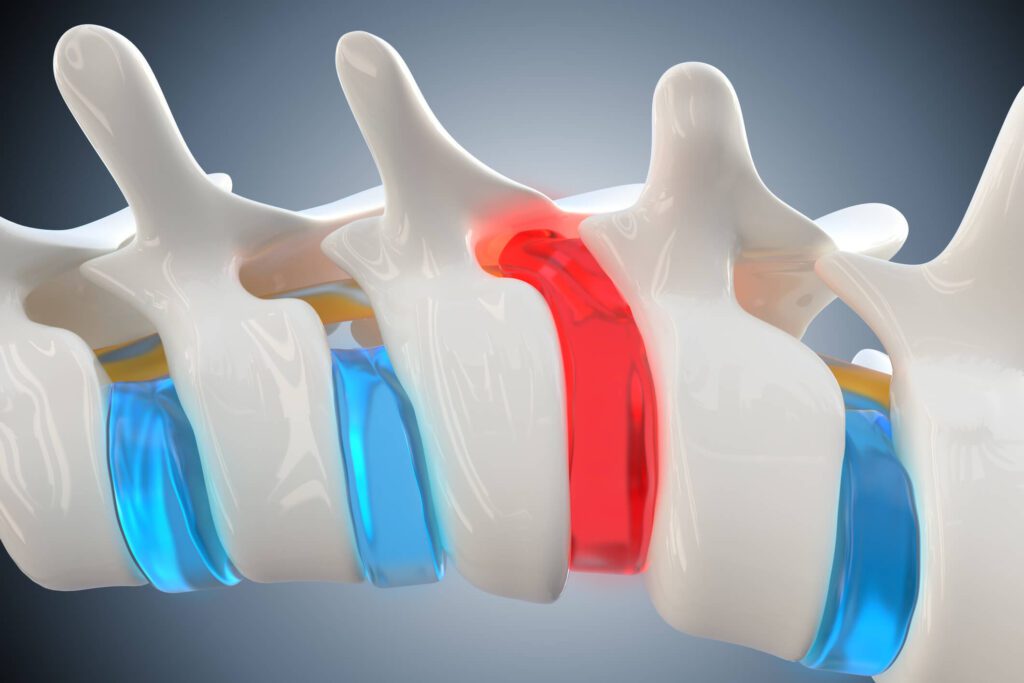For chronic back pain sufferers, the term ‘diffuse disc bulge’ would sound familiar. But understanding this condition and the role of physiotherapy in managing it is essential for making informed decision about effective treatment. Let’s explore the intricacies of diffuse disc bulge in the lumbar spine and how physiotherapy can provide relief and help your recovery.
What is diffuse disc bulge?
A diffuse disc bulge refers to the broadening or protrusion of the intervertebral disc in the spine, often affecting the lumbar region or lower back. Sound confusing? Then imagine your spine as a stack of fragile cushions supporting a delicate structure. Now picture one of the cushions expanding and bulging outward. The bulging cushion is akin to a diffuse disc bulge in the lumbar spine and can exert pressure on nearby nerves, causing discomfort and hindering your ability to move freely.
Why did my disc decide to bulge?
Often a disc bulge stems from the natural aging process through wear and tear. As the discs weaken, they become more susceptible to bulging or protrusion. It can also occur as a result of repetitive stress, poor posture or sudden impact like bending at the back when lifting a heavy item or doing deadlifts at the gym without arching the lower back.
Understanding the symptoms of a diffuse disc bulge
The symptoms of a diffuse disc bulge in the lumbar spine can manifest differently in sufferers. Common symptoms include persistent lower back pain that can radiate down to the buttocks, thighs and even the feet.
Some people also report numbness or tingling sensations in the legs as well as muscle weakness which impacts their mobility and overall comfort.
How can physiotherapy help with disc bulge pain?
There are several physiotherapy treatments that can help. In the event of a pinched nerve due to a disc bulge, physiotherapy can alleviate the pain and reduce inflammation in the affected area.
Manual therapy can help relieve muscle tension, improve spinal alignment and restore mobility while providing relief from pain and stiffness.
Exercise therapy designed to strengthen the deep muscles and stabilise the spine can also minimise pressure on the affected disc.
Choosing the right physiotherapist can also empower you through education and provide you with effective strategies to minimise the likelihood of a relapse.
A final note…
Early intervention is important. Seeking timely physiotherapy treatment can prevent the progression of the condition and alleviate associated symptoms, leading to a faster recovery and better long-term outcomes.
Don’t let a diffuse disc bulge impact your comfort and mobility. Book a consultation with our experienced physiotherapists at New Age Physiotherapy. We can guide you through a personalised treatment plan, tailored to your needs and goals.

